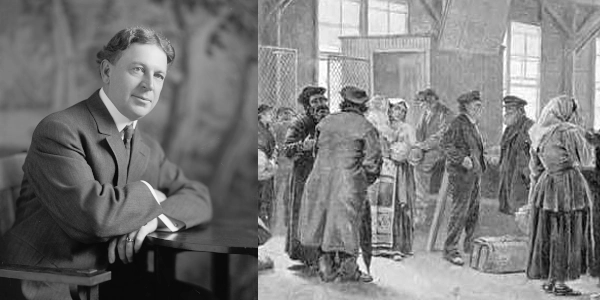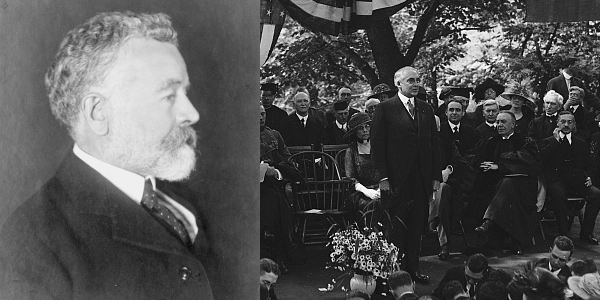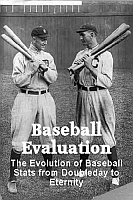Sponsor this page. Your banner or text ad can fill the space above.
Click here to Sponsor the page and how to reserve your ad.
-
Timeline
1921 Detail
May 19, 1921 - A national quota system on the amount of incoming immigrants is established by the United States Congress in the Emergency Quota Act, curbing legal immigration.

The Emergency Quota Act of 1921 is also known by the name the Immigration Quota Act of 1921. It was, to some, a dark chapter in our history; to others a necessity in times of war or prompted by one, not unlike what some claim today. It would be prompted by the mass migration during and after World War I had ended, and the fear that people from certain nations would be less likely to melt into the melting pot of the United States, perhaps remain a threat due to their affiliation with the enemies of the war, or just be controlled in their number, either due to national racism or preference. It was proposed in Congress by Albert Johnson from Washington State. It was endorsed by President Warren G. Harding. Other political figures involved in the cause; Henry Cabot Lodge (who initially called for a literacy test, which was eventually vetoed several times before becoming law in 1917), William Paul Dillingham (using the idea of racial inferiority, with racial meaning more in line with nations that how we think of race today), LeBaron Bradford Colt, President Woodrow Wilson (in office when literacy test overrode his veto), Adolph J. Sabath, and Madison Grant. It was popular.
President Wilson vetoed the bill again as he was leaving office, but as the House of Representatives had passed the law with a voice vote and no count, and that there was only one defector (some sources state two) in the Senate, his attempt at stopping the legislation failed. It was now the first time the United States would limit immigration based on countries, all countries. And what countries immigrants were most thought to need the limits; those from Eastern and Southern Europe. There had been some attempts to limit Asian immigration since 1882. Prior to that date, immigration was encouraged and open to anyone.
The system was based on the percentage of immigrants from the 1910 census, and would be prorated from a total number of 357,000 immigrants per year, which was also the number who entered in 1910, limiting it to three percent of those from that census. Eighty-six percent of that number would come from the Western Hemisphere; fourteen percent from the Eastern Hemisphere. Did it work, whether you agree with the policy or not? Well, in 1920, there were eight hundred thousand immigrants allowed into the country. In 1922, 309,556; 1924, circa 150,000. Other outcomes, labor shortages but higher wages and prices. The Emergency Quota Act was supported by Labor Unions.

Did the Act Politicize Immigration?
There is no doubt that it began the dialogue, although subsequent acts during the rest of the 1920's continued to address the topic. The National Catholic Welfare Council vehemently opposed it, bringing a religious bent to the discussion. They claimed that it favored Protestant countries, which it did, while others noted its unfairness to Asian and African immigrants. The American Manufactures Association associated it with inflation, and of course, what they meant partially that they'd have to pay out higher wages. The Act was challenged up to the Supreme Court, which upheld its Constitutionality. It remained in force until 1965.
Over the years before 1965, as well as after, there were fears of cultural dilution. Albeit, in today's dialogue, despite the fact that the majority of immigrants, legal immigrants, are a boon to the nation's economy and culture, there is a debate on whether those that bring the violent habits of their regions are worth limitations, as President Donald Trump just did to immigrants from twelve nations in May 2025.
Congressman Albert Johnson
So who is this Albert Johnson, and why was it him who introduced the Emergency Quota Act after World War I was over. First, he was a Congressman from Washington State's 3rd District, and served those constituents for twenty years. He had been born in the midwest, March 5, 1869, a post Civil War baby, in Lincoln's home town of Springfield, Illinois. He had been a newspaper reporter then editor prior to his political elections and served in World War I. Was a Republican when they were the liberals. Supported Women's Rights, President William Howard Taft, and opposed monopolies. Johnson, was, however, a member of the House Committee on Immigration and Naturalization, and was integral in the legislation above, as well as the Immigration Act of 1924, which he wrote, and is often called the Johnson-Reed Act. He had been well known through the debate since 1910 as calling for a suspension of all immigration, which he brought to a vote in 1919. That was defeated.
In much the same way a national dialogue today (2025) stems around illegal immigration and its impact on terrorism or changes in culture, Johnson also felt the same way about how legal immigration had been handled previously.
"... a stream of alien blood, with all its inherited misconceptions respecting the relationships of the governing power to the governed."
This would lead to charges that he was a rascist (not particulary tied to his immigration policy, but to his stance on the Jewish community as well as against interracial marriage, which would have been a wrong, but the majority view at the time), and he was accurately called a nativist. Johnson was not done with the current limits; as that Immigration Act of 1924 reduced the percentage to two percent and now based it on the 1890 census.
Text of Emergency Quota Act of 1921
Emergency Quota Act of 1921, United States Statutes at Large (57th Cong., Sess. I, Chp. 8, p. 5-7)
AN ACT
To limit the immigration of aliens into the United States.
Be it enacted by the Senate and House of Representatives of the United States of America in
Congress assembled, That as used in this Act -
The term ''United States'' means the United States, and any waters, territory, or other place
subject to the jurisdiction thereof except the Canal Zone and the Philippine Islands; but if any
alien leaves the Canal Zone or any insular possession of the United States and attempts to enter
any other place under the jurisdiction of the United States nothing contained in this Act shall be
construed as permitting him to enter under any other conditions than those applicable to all
aliens.
The word ''alien'' includes any person not a native-born or naturalized citizen of the United States,
but this definition shall not be held to include Indians of the United States not taxed nor citizens of
the islands under the jurisdiction of the United States.
The term ''Immigration Act'' means the Act of February 5, 1917, entitled ''An Act to regulate the
immigration of aliens to, and the residence of aliens in, the United States''; and the term
''immigration laws'' includes such Act and all laws, conventions, and treaties of the United States
relating to the immigration, exclusion, or expulsion of aliens.
Sec. 2. (a) That the number of aliens of any nationality who may be admitted under the
immigration laws to the United States in any fiscal year shall be limited to 3 per centum of the
number of foreign born persons of such nationality resident in the United States as determined by
the United States census of 1910. This provision shall not apply to the following, and they shall
not be counted in reckoning any of the percentage limits provided in this Act: (1) Government
officials, their families, attendants, servants, and employees; (2) aliens in continuous transit
through the United States; (3) aliens lawfully admitted to the United States who later go in transit
from one part of the United States to another through foreign contiguous territory; (4) aliens
visiting the United States as tourists or temporarily for business or pleasure; (5) aliens from
countries immigration from which is regulated in accordance with treaties or agreements relating
solely to immigration; (6) aliens from the so-called Asiatic barred zone, as described in section 3
of the Immigration Act; (7) aliens who have resided continuously for at least one year immediately
preceding the time of their admission to the United States in the Dominion of Canada,
Newfoundland, the Republic of Cuba, the Republic of Mexico, countries of Central or South
America, or adjacent islands; or (8) aliens under the age of eighteen who are children of citizens
of the United States.
(b) For the purposes of this Act nationality shall be determined by country of birth, treating as
separate countries the colonies or dependencies for which separate enumeration was made in
the United States census of 1910.
(c) The Secretary of State, the Secretary of Commerce, and the Secretary of Labor, jointly, shall,
as soon as feasible after the enactment of this Act, prepare a statement showing the number of
persons of the various nationalities resident in the United States as determined by the United
States census of 1910, which statement shall be the population basis for the purposes of this Act.
In case of changes in political boundaries in foreign countries occurring subsequent to 1910 and
resulting (1) in the creation of new countries, the Governments of which are recognized by the
United States, or (2) in the transfer of territory from one country to another, such transfer being
recognized by the United States, such officials, jointly, shall estimate the number of persons
resident in the United States in 1910 who were born within the area included in such new
countries or in such territory so transferred, and revise the population basis as to each country
involved in such change of political boundary. For the purpose of such revision and for the
purposes of this Act generally aliens born in the area included in any such new country shall be
considered as having been born in such country, and aliens born in any territory so transferred
shall be considered as having been born in the country to which such territory was transferred.
(d) When the maximum number of aliens of any nationality who may be admitted in any fiscal
year under this Act shall have been admitted all other aliens of such nationality, except as
otherwise provided in this Act, who may apply for admission during the same fiscal year shall be
excluded: Provided, That the number of aliens of any nationality who may be admitted in any
month shall not exceed 20 per centum of the total number of aliens of such nationality who are
admissible in that fiscal year: Provided further, That aliens returning from a temporary visit
abroad, aliens who are professional actors, artists, lecturers, singers, nurses, ministers of any
religious denomination, professors for colleges or seminaries, aliens belonging to any recognized
learned profession, or aliens employed as domestic servants, may, if otherwise admissible, be
admitted notwithstanding the maximum number of aliens of the same nationality admissible in the
same month or fiscal year, as the case may be, shall have entered the United States; but aliens
of the classes included in this proviso who enter the United States before such maximum number
shall have entered shall (unless excluded by subdivision (a) from being counted) be counted in
reckoning the percentage limits provided in this Act: Provided further, That in the enforcement of
this Act preference shall be given so far as possible to the wives, parents, brothers, sisters,
children under eighteen years of age, and fiancees, (1) of citizens of the United States, (2) of
aliens now in the United States who have applied for citizenship in the manner provided by law,
or (3) of persons eligible to United States citizenship who served in the military or naval forces of
the United States at any time between April 6, 1917, and November 11, 1918, both dates
inclusive, and have been separated from such forces under honorable conditions.
Sec. 3. That the Commissioner General of Immigration, with the approval of the Secretary of
Labor, shall, as soon as feasible after the enactment of this Act, and from time to time thereafter,
prescribe rules and regulations necessary to carry the provisions of this Act into effect. He shall,
as soon as feasible after the enactment of this Act, publish a statement showing the number of
aliens of the various nationalities who may be admitted to the United States between the date this
Act becomes effective and the end of the current fiscal year, and on June 30 thereafter he shall
publish a statement showing the number of aliens of the various nationalities who may be
admitted during the ensuing fiscal year. He shall also publish monthly statements during the time
this Act remains in force showing the number of aliens of each nationality already admitted during
the then current fiscal year and the number who may be admitted under the provisions of this Act
during the remainder of such year, but when 75 per centum of the maximum number of any
nationality admissible during the fiscal year shall have been admitted such statements shall be
issued weekly thereafter. All statements shall be made available for general publication and shall
be mailed to all transportation companies bringing aliens to the United States who shall request
the same and shall file with the Department of Labor the address to which such statements shall
be sent. The Secretary of Labor shall also submit such statements to the Secretary of State, who
shall transmit the information contained therein to the proper diplomatic and consular officials of
the United States, which officials shall make the same available to persons intending to emigrate
to the United States and to others who may apply.
Sec. 4. That the provisions of this Act are in addition to and not in substitution for the provisions of
the immigration laws.
Sec. 5. That this Act shall take effect and be enforced 15 days after its enactment (except
sections 1 and 3 and subdivisions (b) and (c) of section 2, which shall take effect immediately
upon the enactment of this Act), and shall continue in force until June 30, 1922, and the number
of aliens of any nationality who may be admitted during the remaining period of the current fiscal
year, from the date when this Act becomes effective to June 30, shall be limited in proportion to
the number admissible during the fiscal year 1922.
Approved, May 19, 1921.

Examples of the 1921 National Immigration Quotas
Albania, 288 people, Armenia 230, Austria 7,451
Belgium 1,563, Bulgaria 302, Czechoslovakia 14,357
Danzig 301, Denmark 5,619, Estonia 1,348
Finland 3,921, Fiume 71, France 5,729
Germany 67,607, Greece 3,294, Hungary 5,638
Iceland 75, Italy 42,057, Latvia 1,540
Lithuania 2,460, Luxembourg 92, Netherlands 3,607
Norway 12,202, Poland 31,146, Portugal 2,465
Romania 7,419, Russia 24,405, Spain 912
Sweden 20,042, Switzerland 3,752, Turkey 2,388
United Kingdom 37,342, Yugoslavia 6,426, Australia/New Zealand 359
Total from All of Asia, 1,066; from All of Africa, 122.
There were significant reductions after the passage of the Immigration Act in 1924; particulary from Russia 2,248, Italy 3,854, and Poland 5,982.
Photo above: Montage (left) Congressman Albert Johnson, Unknown date, Harris and Ewing. Courtesy Library of Congress, Wikipedia Commons (right) Drawing of immigrants at Ellis Island, 1893, Harpers Weekly. Courtesy Library of Congress. Below: Montage (left) Senator Henry Cabot Lodge, 1912. Courtesy Library of Congress. (right) President Warren G. Harding, date unknown, Harris and Ewing. Courtesy Library of Congress. Info source: "The Emergency Quota Act, A Major Milestone in United States History," Immigration.laws.com; San Diego State University; "Emergency Quota Act," 2023, Leslie V. Tischauser, Ebsco.com; Library of Congress; Wikipedia Commons.

History Photo Bomb
Belgium 1,563, Bulgaria 302, Czechoslovakia 14,357
Danzig 301, Denmark 5,619, Estonia 1,348
Finland 3,921, Fiume 71, France 5,729
Germany 67,607, Greece 3,294, Hungary 5,638
Iceland 75, Italy 42,057, Latvia 1,540
Lithuania 2,460, Luxembourg 92, Netherlands 3,607
Norway 12,202, Poland 31,146, Portugal 2,465
Romania 7,419, Russia 24,405, Spain 912
Sweden 20,042, Switzerland 3,752, Turkey 2,388
United Kingdom 37,342, Yugoslavia 6,426, Australia/New Zealand 359
Total from All of Asia, 1,066; from All of Africa, 122.
There were significant reductions after the passage of the Immigration Act in 1924; particulary from Russia 2,248, Italy 3,854, and Poland 5,982.
Photo above: Montage (left) Congressman Albert Johnson, Unknown date, Harris and Ewing. Courtesy Library of Congress, Wikipedia Commons (right) Drawing of immigrants at Ellis Island, 1893, Harpers Weekly. Courtesy Library of Congress. Below: Montage (left) Senator Henry Cabot Lodge, 1912. Courtesy Library of Congress. (right) President Warren G. Harding, date unknown, Harris and Ewing. Courtesy Library of Congress. Info source: "The Emergency Quota Act, A Major Milestone in United States History," Immigration.laws.com; San Diego State University; "Emergency Quota Act," 2023, Leslie V. Tischauser, Ebsco.com; Library of Congress; Wikipedia Commons.






